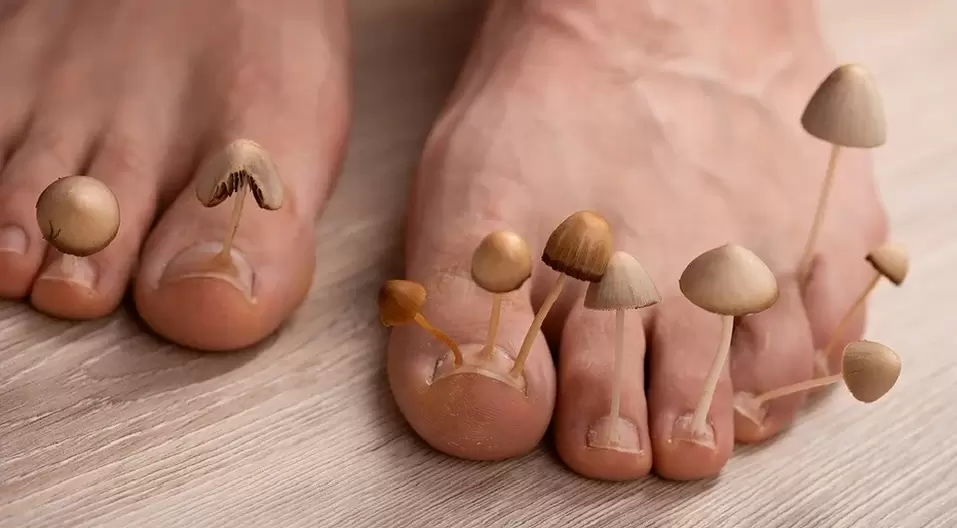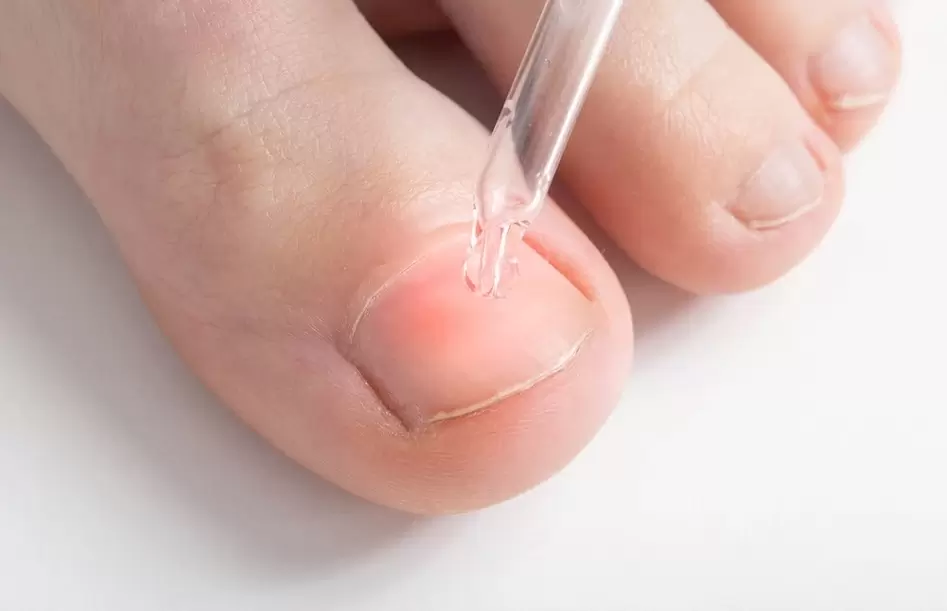Onychomycosis is an unpleasant disease that becomes noticeable when it develops quite strongly and requires active treatment. For whom is the fungus most dangerous and what mistakes should be avoided to get rid of it? Let's talk.

Damage to toenails is caused by different types of fungi (mold, yeast, trichophytes). The toenail plates are most often affected. The danger of this disease is that it does not appear immediately externally; noticeable changes occur already when it is more difficult to influence the causative agent of the disease. In this case, the infection can easily spread from the feet to the hands and enter the organs, which harms overall health.
This is a very common disease and with age, the risk of contracting an infection increases.
Self-treatment, despite the large number of drugs available in pharmacies, is unacceptable: it may simply not produce the desired effect or worsen the situation. We tell you why, as well as how to protect yourself from this unpleasant pathology and which treatment methods can be used and which may not help.
Types of nail fungus
Onychomycosis can differ in the type of fungus itself, the form of infection and the stage.
Types of mushrooms
- Yeast.Yeast not only lives outside, it is part of our microflora. Normally, these are "good" and "bad" bacteria in an optimal combination. With normal immunity and health, yeast does not show its negative properties and if disturbed, it becomes dangerous.
- Dermatophytes.It is the most common causative agent of the disease (more than 80% of cases). You can find them in the ground, in dust, and you can also catch them from cats and dogs. This species is also the causative agent of ringworm.
- Mold.Mold thrives in humidity and heat (this is why it is important to ventilate rooms regularly). These mushrooms are very common, literally everywhere, some species can even be found in food. In addition to fungal infections, they can cause lung diseases.
Depending on the type of fungus, some treatments may vary. To determine the species, a mycological culture is carried out on the nails, where the type of fungus is determined, as well as its sensitivity to antifungal drugs. Based on these results, the drug is selected.
Without an accurate diagnosis, self-administration of the drug may simply not work.
Types depending on the shape of the lesion
- Surface- damage to the nail plates themselves.
- Distal- The forefoot is affected.
- Lateral- the side parts.
- Proximal- rear end.
- Total- The entire foot is affected.
Developmental stages
- Early.The most difficult stage, because at this time external manifestations may be slightly noticeable. At the same time, it is advisable to start treatment.
- Progressive.The appearance of the nails has already changed noticeably.
- Spear.Nail plates are destroyed. Secondary infections may occur, which will only make symptoms worse.
The earlier treatment begins, the more effective it will be. It is important to remember that the disease progresses more quickly in people with weakened immune systems.
Toenail fungus - symptoms
The first signs of a fungal infection may begin with damage to the skin of the foot, manifested by redness, peeling and itching. In addition, the disease can only begin with a change in the appearance of the nails. At the beginning of the disease, the nail plate is most often affected at the edge in the form of a yellowish or whitish spot. Subsequently, the color of the entire plate changes and its thickness changes. The infection can affect one or all nails.
Outwardly, there is nothing attractive about this disease - this is proven by photos of toenail fungus.
%20and%20a%20healthy%20nail%20(right).webp)
Causes
The causes of toenail fungus are most often associated with direct contact with a person infected with the infection or with objects used by them (shoes, clothing, bath mats, washcloths, manicure tools). Infection often occurs when visiting swimming pools, saunas, baths and gyms. Factors contributing to infection are cracks in the interdigital folds, increased sweating of the feet, dry skin and plate injuries.
People at risk of contracting this disease are, first of all, people with reduced immunity, as well as those with pathologies such as diabetes, venous insufficiency, varicose veins, flat feet, immune diseases, as well asthose taking steroids and cytostatic (anti-tumor) drugs.
Prevention and treatment
To prevent infection, it is very important to follow hygiene rules:
- in swimming pools, saunas, baths, only wear slates;
- air and dry shoes regularly;
- change socks regularly;
- after the pool, shower and let your feet dry;
- do not try on someone else's shoes, especially barefoot;
- increase immunity.
Also, if you know that there is a carrier of infection next to you, it is important not to use their hygiene items or shoes.
How to get rid of foot fungus

At the first signs of infection noted (we have already explained and shown what toenail fungus looks like), you should immediately start treating it, without starting it. First of all, the infection can reach neighboring plaques, and in addition, it can enter the organs along with the blood, which can cause poisoning, allergic reactions or diseases associated with the immune system.
Treatment of toenail fungus includes external methods (antifungal solutions, creams, ointments), as well as oral administration of antifungal drugs in tablets. At the initial stage of infection, if the duration of the disease does not exceed a month and the damage to the plaque does not exceed 1/3, only external antifungal treatment is possible. If the process is long, tablets are needed for complete recovery.
There are also surgical and laser treatment methods, but they may not be effective enough on their own and the defective plaque may still grow back.
Self-medication is also not allowed. It's very dangerous. The doctor should choose any means and then help monitor the healing process. With this disease, it does not happen quickly (from 3 months or more). At the first visible improvements, you should not stop taking medication, as a relapse may occur - the infection remains inside the nail, you need to wait until the plaque grows back completely, without damage. It is necessary to follow the entire course, and always under supervision.
The most common processing errors
- Simply dry shoes and socks without treatment.If fungus appears on your feet, it is important not only to wash or dry your shoes or socks. Shoes should be treated with an antifungal agent and socks should be ironed to kill harmful spores.
- Use only your own hygiene instruments, but do not process them in any way.Regardless of who is infected - you or a loved one, you should not only start using only individual hygiene items and tools, but they should also be treated with special means. Whenever possible, it is best to use disposable instruments.
- Use folk remedies.You can find many such recipes on the Internet. Some may help, but experimenting on your own can be very dangerous. Everything must be agreed with your doctor.















